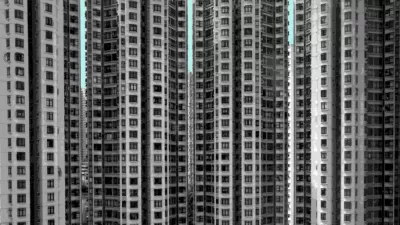A versatile building material with a long pedigree, concrete also has associations with ugliness and totalitarianism. Its reinforced variety, widely used today, can conceal a costly flaw.

From ancient Rome to modern China, concrete is one of humanity's favorite building materials. Tim Harford looks at concrete's history and how we view it. "Architecturally, concrete implies lazy, soulless structures: ugly office blocks for provincial bureaucrats; multistory parking garages with stairwells that smell of urine. Yet it can also be shaped into forms that many people find beautiful—think of the Sydney Opera House, or Oscar Niemeyer's cathedral in Brasilia."
Concrete is versatile, but it isn't easily repurposed. "That's the fundamental contradiction of concrete: incredibly flexible while you're making something, utterly inflexible once it's made." It's also long-lasting, and will outlive materials like wood and metal.
But that's not necessarily the case for all buildings constructed from concrete. Harford writes, "Reinforced concrete is much stronger and more practical than the unreinforced stuff. It can span larger gaps, allowing concrete to soar in the form of bridges and skyscrapers. But here’s the problem: if cheaply made, it will rot from the inside as water gradually seeps in through tiny cracks in the concrete and rusts the steel."
There are methods to prevent that decay, but it's already causing problems in the U.S., and will soon cause issues in China's "concrete forests" of high-rise housing. Harford suggests that perhaps concrete is best used where it can immediately improve needy people's lives, and gives us several examples.
FULL STORY: How Concrete Cemented Its Place in History

Alabama: Trump Terminates Settlements for Black Communities Harmed By Raw Sewage
Trump deemed the landmark civil rights agreement “illegal DEI and environmental justice policy.”

Planetizen Federal Action Tracker
A weekly monitor of how Trump’s orders and actions are impacting planners and planning in America.

The 120 Year Old Tiny Home Villages That Sheltered San Francisco’s Earthquake Refugees
More than a century ago, San Francisco mobilized to house thousands of residents displaced by the 1906 earthquake. Could their strategy offer a model for the present?

Ken Jennings Launches Transit Web Series
The Jeopardy champ wants you to ride public transit.

BLM To Rescind Public Lands Rule
The change will downgrade conservation, once again putting federal land at risk for mining and other extractive uses.

Indy Neighborhood Group Builds Temporary Multi-Use Path
Community members, aided in part by funding from the city, repurposed a vehicle lane to create a protected bike and pedestrian path for the summer season.
Urban Design for Planners 1: Software Tools
This six-course series explores essential urban design concepts using open source software and equips planners with the tools they need to participate fully in the urban design process.
Planning for Universal Design
Learn the tools for implementing Universal Design in planning regulations.
Clanton & Associates, Inc.
Jessamine County Fiscal Court
Institute for Housing and Urban Development Studies (IHS)
City of Grandview
Harvard GSD Executive Education
Toledo-Lucas County Plan Commissions
Salt Lake City
NYU Wagner Graduate School of Public Service




























